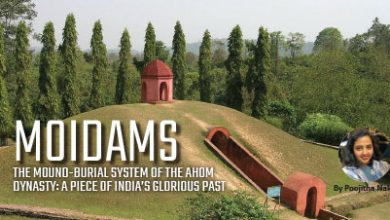
Nestled along the banks of the Tungabhadra River in Karnataka, India, Hampi stands as a testament to the grandeur of the Vijayanagara Empire. Encompassing an area of 236.46 km² across two districts, this UNESCO World Heritage site boasts 56 nominated monuments that reflect its rich cultural and architectural legacy.
The name “Hampi” derives from “Pampa,” the ancient name of the Tungabhadra River. According to legend, Pampa, daughter of Brahma, was a devout worshiper of Shiva. Impressed by her devotion, Shiva granted her a boon, and she chose to marry him. The place came to be known as Pampakshetra (the land of Pampa), and Shiva as Pampapathi (consort of Pampa). Hemakuta Hill in Hampi is believed to be where Shiva performed penance before their marriage, with the gods showering gold from the heavens, giving the hill its name, Hemakuta (“heap of gold”).

Founded in 1336 by the Sangama brothers, Bukka and Harihara, who fled from Warangal and Kampili to establish Vijayanagara, the empire flourished under four dynasties: Sangama, Saluva, Tuluva, and Aravidu. At its peak, the empire was larger than Rome, renowned for its opulent palaces, temples, markets, and intricate architecture that astounded visitors from across the globe.
Discovered by Colin Mackenzie in 1800, Hampi’s ruins have undergone ongoing excavations by the Archaeological Survey of India, revealing more of its ancient treasures. Today, Hampi attracts tourists worldwide, offering an immersive experience in history, culture, and spirituality amidst its sprawling ruins and breathtaking landscapes.
The Hampi World Heritage Site comprises the ruins of the medieval capital of the Vijayanagara dynasty, including 56 nominated monuments. Located along the banks of the Tungabhadra River in Karnataka, India, the site spans an area of 236.46 km² across two districts, with a core area of 41.8 km². Enlisted as the ‘Group of Monuments, Hampi’ in the World Heritage list in 1986 under criteria (i), (iii), and (iv), Hampi is predominantly an archaeological ruin, encompassing both surface and sub-surface elements. Its cultural resources also include interconnected systems such as natural landscapes, defense mechanisms, water management, royal structures, sacred sites, and living heritage, some of which remain functional to this day. The Virupaksha Temple, dedicated to Lord Shiva and dating back to the 7th century AD, remains a center of pilgrimage. The Vijaya Vittala Temple, a UNESCO World Heritage site, is famed for its iconic stone chariot and musical pillars. Other notable monuments include the Hazara Rama Temple with its Ramayana bas-reliefs, the Achyutaraya Temple offering stunning views, and the elegant Lotus Mahal, blending Hindu and Islamic architectural styles. Other important monuments include:

- Elephant Stables: A row of domed chambers where the royal elephants were housed, showcasing the Vijayanagara architectural style.
- Queen’s Bath: A large, ornate bathing area once used by the royals, featuring a central pool surrounded by verandas, adorned with intricate stucco work.
- King’s Balance: A stone balance scale where kings used to weigh themselves against precious metals, which were then distributed to the needy.
- Hampi Bazaar: The main market area of the ancient city, lined with old pavilions and colonnaded structures.
- Matanga Hill: Not a monument per se, but a prominent hill offering panoramic views of the entire Hampi landscape, especially stunning at sunrise and sunset.
On the cultural front, annual festivals till today celebrate the ceremonial marriage of Shiva and Pampa, underscoring Hampi’s spiritual and cultural heritage. Over time, Shiva became known as Virupaksha, symbolizing his omnipresence and divine grace.
These monuments collectively reflect the grandeur and architectural brilliance of the Vijayanagara Empire, making Hampi a popular destination for history enthusiasts and travelers alike. Today Hampi sees an annual foot fall of 5.5 lakh tourists making it a one of the bustling destinations in Karnataka. Hampi, with its timeless grandeur and architectural splendor, remains a beacon of India’s rich cultural heritage. As visitors wander through its ancient streets and marvel at its magnificent ruins, they are transported back in time to an era of opulence, creativity, and spiritual devotion. Hampi stands not only as a reminder of a glorious past but also as a living testament to the enduring legacy of the Vijayanagara Empire. A journey to Hampi is not just a visit to archaeological ruins; it is an immersive experience in history, culture, and the essence of India’s vibrant past.







